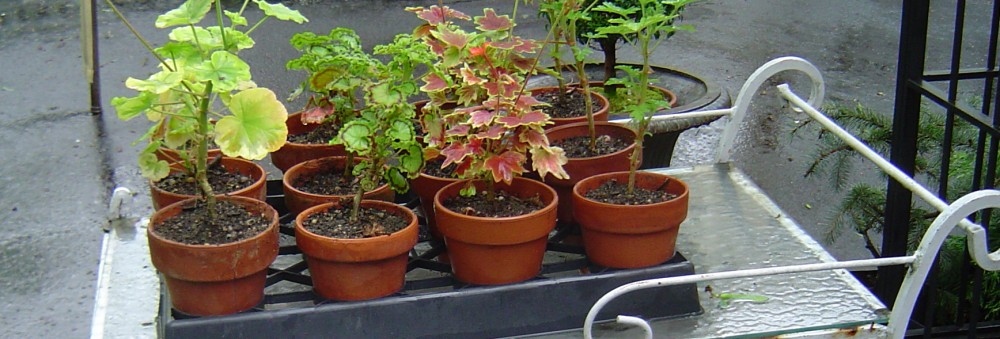Just when the summer garden is hitting its peak and one is tempted to sit back a bit for extended hours of basking in the glow of job well done, comes along a project that can no longer be ignored or put off. In a couple of weeks the two perennials beds in the front garden and most of the length of the side path are going to be dug up to get some drainage problems resolved.
For years now, every time we experienced a really ferocious bout of rain, where the rate of falling water outpaced the rate of drainage, water seeped into the basement through those aforementioned foundation walls. A French drain in the unfinished basement could not cope with the water at such times so there’d be pools of water in various parts of the basement floor. Things would dry eventually and because the floor was built at a slight slope and opens out to the terrace, there is never a possibility of flooding. However, as we all know, letting damp linger around is not a good thing. For a good while I put off getting the situation remedied. Creating chaos in the garden made me procrastinate. However, with climate change, thunderstorms are happening more fiercely and frequently. The drainage problem simply had to be solved.
Out will come a large portion of perennials to make room for digging trenches 6 feet deep. Corrugated irrigation pipes placed at the bottom of the trenches after waterproofing the foundation walls that meets the garden, will allow rain water to be diverted to a dry well in the herb garden. A part of the herb garden will be temporarily dismantled to create that dry well. After all that work has been accomplished, the trenches will be filled back in and herb garden reestablished. Path and front beds replanted and order restored.
I chose August for this project because that meant the project would be completed well before bulb planting season. As much as I’m loathe to have my garden dug up, I’m using this opportunity to seriously and ruthlessly review the plantings. For some time now I’ve been thinking about redoing the front beds but its daunting to deal with established areas. Now however, with plants dug up anyway, one might as well execute the ideas and plant the plants that were just items on a wish list till now.
My initial resistance to starting this project is making way for creativity and the joy of new experiments with design and plants. I’d like to keep it simple but exciting. Not everything will be new. Some beloved longtime residents such as Baptisia, Joe Pye, phlox paniculata and such will be grandfathered in. I must find my wish-list of plants-to-try and make my selections. Source those plants preferably at my local nursery. No horticultural divas allowed of course. The human ones are bad enough.
My immediate challenge will be keeping the plants set aside for replanting safe and healthy till the whole project is completed. Fingers crossed no heat wave will occur. Plants evicted from the beds will be given new residences elsewhere in the garden. Some will be re homed in a friend’s new garden. No one will be cast away. The tenets of humanism will prevail. Always.
Note: In keeping with the theme of creating some disorder, here are some images of (mostly) the front beds in random order –


















(c) 2024 Shobha Vanchiswar
[do_widget “Blog Subscriptions (Jetpack)”]




































































































































